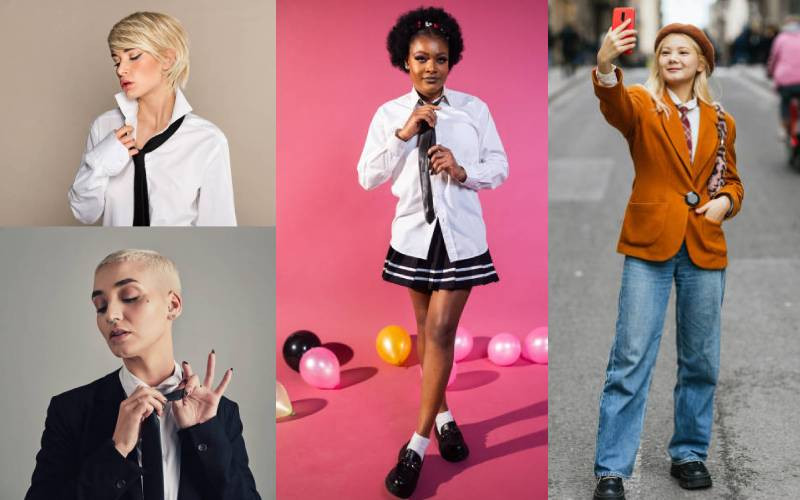
The tie; once a source of childhood rebellion, has become a willing choice for many, blurring the lines between formal and casual wear.
And as gender norms in fashion become increasingly fluid, the tie stands as a symbol of this transformation. Whether traditionally knotted at the neck, casually draped or repurposed as a belt, the tie has it all.
The resurgence of the tie in fashion has largely been influenced by vintage and retro trends.
As younger generations rediscover and reinterpret styles from decades past, ties have found new life as statement pieces in both casual and formal wear.
This nostalgic approach to fashion has helped to free ties from their stuffy, corporate image and reposition them as cool, versatile accessories.
Historically, ties were primarily associated with men’s formal wear, often mandatory in educational institutions and corporate environments.
Many of us can remember the strict dress codes of our school days, where a missing tie could result in disciplinary action.
This enforced uniformity often led to a sense of resentment towards neckwear, with many people eagerly ditching their ties at the first opportunity.
However, the fashion landscape has changed dramatically. Today, ties are embraced by people of all genders and ages, worn not only around the neck but in a variety of other creative ways.
This renaissance of the tie as a fashion accessory speaks to a wider trend of appropriating and reimagining traditional items of clothing.
The casual approach to wearing ties has extended to neckwear itself. Gone are the days when a tie necessarily meant a perfectly executed Windsor knot.
Today, loosely rolled or draped ties have become a popular style choice, offering a relaxed yet polished look.
This casual approach is in line with the wider trend towards more comfortable and individualistic fashion choices in both professional and social settings.
One of the most striking developments is the use of ties as belts. This innovative styling choice adds a touch of sophistication to casual outfits while subverting the traditional purpose of the tie.
Threaded through belt loops or simply knotted around the waist, ties offer a unique alternative to the standard belt, allowing for greater colour coordination and textural contrast within an ensemble.
Perhaps most importantly, ties have shed their association with masculinity. Women and non-binary individuals have enthusiastically embraced ties as part of their wardrobes, further expanding the versatility of the accessory.
This gender-neutral approach to wearing ties reflects a larger societal shift towards more fluid and inclusive fashion norms.
Tie designs themselves have also evolved significantly. While classic patterns and solid colours still have their place, there’s been an explosion of creativity in tie design.
Whimsical cartoon prints, bold graphic patterns and even bespoke ties have become increasingly popular.
This variety of design allows individuals to express their personality and interests through their choice of neckwear, turning a once-obscure accessory into a canvas for self-expression.
The evolution of the tie from a symbol of conformity to a tool of individual style is particularly evident in workplace fashion.
Many companies have relaxed their dress codes, allowing for more creative interpretations of professional attire.
In this context, ties have become optional accessories that can add flair to an outfit, rather than mandatory elements of a uniform.
 The Standard Group Plc is a multi-media organization with investments in media
platforms spanning newspaper print
operations, television, radio broadcasting, digital and online services. The
Standard Group is recognized as a
leading multi-media house in Kenya with a key influence in matters of national and
international interest.
The Standard Group Plc is a multi-media organization with investments in media
platforms spanning newspaper print
operations, television, radio broadcasting, digital and online services. The
Standard Group is recognized as a
leading multi-media house in Kenya with a key influence in matters of national and
international interest.



